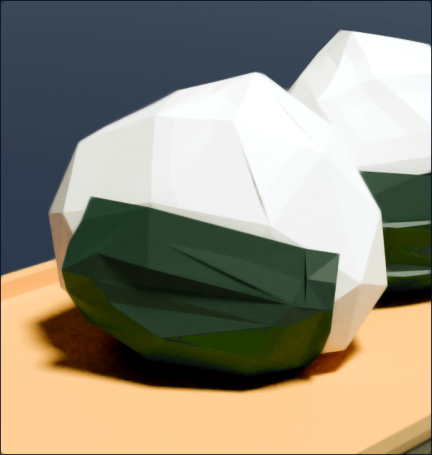For me, I really want to get into niri, but the lack of XWayland support scares me (I know there’s solutions, but I don’t understand them yet).
Also, I stopped using Emacs (even though I love its design and philosophy with my whole heart) because it’s very slow, even as a daemon.
Zed - I’ve been kind of using it for one-off edits, but it’s just not mature yet for most languages.
And they use extremely bad coding practices
Have a source?
Somewhere on Lemmy but dont bother to look as it has no search.
There also is a Github issue. Search for “zed automatic download plugins”
Care to elaborate?
I kind of want to try wayland just to be modern, but I’m pretty happy with xmonad and don’t want to learn another window manager.
deleted by creator
You might want to look into River, a tiling Wayland compositor inspired by xmonad. Disclaimer, I’ve not actually used xmonad before so I’m not in a position to compare the two. But River is configured entirely through riverctl commands. Its “config” is an executable, by default at
$XDG_CONFIG_HOME/river/initbut you can point it to a different path, which can technically be any executable file that just executes when River starts. Ordinarily it’d be a shell script calling all the riverctl commands you want to get your River set up the way you like it, but it could be any executable you like really. You can also use other languages other than shell scripting.It’s still in pretty early development, but I daily drive it for my main general-purpose machine and it works completely fine. I use it for web browsing, coding, gaming, chatting, general productivity, etc, all works. I’ve noticed some minor hiccups but nothing breaking or unusable. Tbh I would say it’s more stable than Hyprland which I’ve also used and have noticed that Hyprland updates (especially from git) would frequently break it, whereas I was running River compiled from the latest commit of master branch for a while and never had an update break things.
Common Lisp. It would take a long while before I’m comfortable working on a project using that language. There’s also Lem editor but setting it up is a pain on NixOS.
That’s my first time hearing of Lem—it looks fantastic. What’s the issue with it on NixOS?
- There is no lem package on NixOS.
- Common lisp related packages tend to be outdated
- NixOS violates FHS to allow each packages to build against specific versions of dependencies, so CL tools might not work as expected.
Anything beyond setting up a network-wide dns blocker on docker, so… crowdsec, fail2ban, some proxy-related stuff, zero trust tunnelers and so on.
Why? Because its overkill to my current setup and I don’t see myself using em for real other than for learning purposes, and thats it.
And before someone asks “Do you protect your server at all?”. Other than making some “hacky” stuff with my internet so all ports appear as closed whilst they actually aren’t? Eh, not really. Still, my server is about to reach a year of running nonstop 24/7 and it has never been hacked a single time since then, so naaaw.
deleted by creator
I want to use COSMIC but its design sucks, I prefer KDE (and on the Rust side: slint).
I want to use GNOME as what it does works great, but it lacks a whole list of features I use.
I want to use Haruna or many other KDE apps, but GNOME/GTK apps are often better and I dont care.
I want to use Gapless as it is the only music player on Linux that seems to not suck? But it lacks many features.
Does COSMIC’s design suck or is it in pre-alpha?
No that is the design they want. If something is ready, then their design.
Its design sucks
Agreed. But I’m SO tired of trying to find and configure a good tiling WM that has rounded corners and isn’t impossible to install or created by assholes (it also helps that nice QoL features like easy kb layout switching are included ootb).
Qtile, when scenefx support happens (which will happen when scenefx releases v1.0 aka anytime between this year and the next decade by the looks of things), will be perfect for me but until then, I’m torn between Qtile, Hyprland and COSMIC.
As far as rounded corners and easy to use, I’ve had a tremendous time with swayfx for the past few months, which I switched to from Hyprland.
I want to use GNOME as what it does works great, but it lacks a whole list of features I use.
Watch the list actually get longer over time.
Niri looks really cool. I’ve used tiling WM before but scrolling is a unique take, perhaps more productive for some folks?
Nushell is a good one. I do data science for a living and it’d be nice to have the shell handle some small data transformations instead of writing a script in python. But all the syntax and behavior is very different than bash, so I’ve been afraid to start because of the learning curve.
Btrfs. I’ve been using ext4 for so long, I’m afraid that switching up will just annoy me.
Zsh: same reason.
deleted by creator
Not OP , but regarding zsh, it has much better auto completion, and suggestion support. Additionally you can theme your prompt much more, see for example powerlevel10k
Perhaps you are a more discerning filesystem user than I am, but I don’t think I’ve actually noticed any difference on btrfs except that I can use snapshots and deduplication.
Zsh
FWIW, the excellent ZSH Quickstart kit has been splendid for my transition.
Actually, tutorials like that address a big train that I don’t want to switch. The first steps are things like:
- Install these fonts that only work in a GUI environment
- Install these programs straight from GitHub without your package manager
…and all I hear is: “this stuff isn’t ready yet” and “I’m going to be starring at Unicode glyphs the next time I have to tinker outside of my GUI”.
If I can’t easily and securely install a shell on every environment I use as I don’t want to be constantly context switching, then I’m going to have to stick to Bash.
…and all I hear is: “this stuff isn’t ready yet” and “I’m going to be starring at Unicode glyphs the next time I have to tinker outside of my GUI”.
This really isn’t a zsh problem, but a “people putting too much stuff in a ‘getting started’ config”.
I used zsh for 15 years before looking at any plug-in manager, you can get a lot of the good stuff like the completion by just going through the first-run wizard included in zsh. A lot of stuff is included directly with zsh, including various prompt themes (which is what that tutorial wants extra fonts for, because they use a fancy prompt with custom glyphs; I don’t think any of the built-in ones need that)
Things like fuzzy history search with fzf is usually included with fzf’s distro package and the additional zsh-completions package for less used or newer commands is also packaged by most distros. In my experience, a lot of the other plugins are stuff that could be a standalone script instead of a plug-in anyway.
Bcachefs, and bcachefs on root. Need something with filesystem level encryption instead of LUKS, and *ubuntu’s and derivatives have all abandoned ZFS on root installs now.
Bcachefs has filesystem encryption without LUKS? Did this have an audit? I use BTRFS and it is fine, but boot is unencrypted (using TPM would be cool)
https://en.wikipedia.org/wiki/Bcachefs
Bcachefs is a copy-on-write (COW) file system for Linux-based operating systems.[3] Features include caching,[4] full file-system encryption using the ChaCha20 and Poly1305 algorithms,[5] native compression[4] via LZ4, gzip[6] and Zstandard,[7] snapshots,[4] CRC-32C and 64-bit checksumming.[3] It can span block devices, including in RAID configurations.[5]
I see it has an audit back in 2017, but I’ve yet to find anything newer. The finding was good, but suggested further audit be done.
I dont see the difference to BTRFS apart from encryption and maybe caching? I was always confused why people hype it so much.
Interesting, yes I wouldnt not use LUKS if the alternative is less known, not used by enterprise distros
The tiered storage stuff is pretty cool. You can say “I want this data on this disk, so if I get a cache miss from a faster disk/RAM it’ll come from this other disk first.”
I believe it also has some interesting ways of handling redundancy like erasure coding, and I thiiiink it does some kind of byte-level deduplication? I don’t know if that’s implemented or is even still planned, but I remember being quite excited for it. It was supposed to be dedupe without all of the hideous drawbacks that things like ZFS dedupe have.
EDIT: deduplication is absolutely not a thing yet. I don’t know if it’s still on the roadmap.
It’s mainly supposed to be simpler and by extension faster than btrfs (which is kinda proven by the fact that fewer devs made this thing work in less time when compared to btrfs). It happens to enable some extra features that way too.
However, while btrfs annecdotally had many issues, it’s used by big players like SUSE and even bigger ones like Facebook these days. bcachefs on the other hand is nowhere near as battle tested, so I’ll stay away from it for a little longer.
Does it have the self-healing capabilies of
btrfs scrupandbtrfs defragment? I guessbtrfs balanceis b-tree specific.I heard BTRFS is bettter than EXT4 because it can do these things, EXT4 cant
Bachefs is in the kernel now so trying it on a spare drive or partition is super trivial these days depending on distro. You only need a few minutes of time.
Getting it on root is a bit harder as almost no installers support it yet. The only distro I can think of is CachyOS.
deleted by creator
I want to use Neovim but I haven’t gotten around to really learning it yet.
deleted by creator
That’s me as well, I’ve used vim for simple edits over the years but more and more just used nano for most of my terminal based edits. Finally ran vimtutor (mainly because I wasn’t aware of it) and wow, I should have done that years ago.
I used neovim but recently switched to helix and highly recommend it. If you haven’t tried nvim yet, give helix a try before deciding. A good way to compare is do the tutorial of each and see which you like more
nvim +Tutorandhx --tutor(orhelix --tutor).If you’re a current vim user the helix keybindings are only a small learning curve after the tutorial, and feel a lot smoother imo
I love Helix. I like that it pretty much works out of the box and the only thing you have to do is install language servers and in some cases configure them, but that’s (mostly) well documented. No need to install plugins or use a preset “distribution” like with NeoVim. I also like the built-in keyboard shortcut hints, for example when you press g (goto) it shows you what key will do what.
The way Helix does “select first, then act” is subjective, but I like it.
Agree on all counts. I didn’t like finding and comparing plugins for neovim, and then wrestling with environment stuff to get them to work, and having to change a bunch of options to get nvim to work how I want. With helix, my config of things I’ve changed from default is very small, and there’s no wrestling with plugins.
And yeah, “select then act” feels a lot smoother and more intuitive to me. If you like that and like plugins tho, check out kakuone
This is the reason I liked kakoune right away after I started using it: select, then act, and every movement is also a selection.
Could you elaborate on what helix is?
A keyboard and terminal based text editor, similar in some ways to neovim, vim, and vi
I’ve used helix for a few months and liked a few default keybindings. Didn’t like the reversed sequences (movement then action) so switched back to neovim and configured helix like bindings for some actions.
I tried out Helix, but I think the biggest issue that I have is that with (neo)vim, I can use the keybindings in most of the editors I use through a plugin (such as IdeaVim for the JetBrains suite) - but I do not think the concept of Helix keybinding plugins have really hit anywhere.
Helix itself seemed really cool when I was playing around with the tutor mode though.
The learning curve is absolutely colossal, especially if you want to use it as a full IDE. Even with the legend panel it still doesn’t tell you have the story
NixOS
Agreed, but I found getting NixOS the way I want it, to be super overwhelming, and documentation simply sucks. I’ve been thinking of forking ZaneyOS (Link: https://gitlab.com/Zaney/zaneyos) and basing my NixOS config on it. Otherwise, it’s just too much.
I just started yesterday in a VM. It’s no stress and you can easily put your configuration on metal after. Pretty fun stuff.
I have my garuda installation just where and how i want it to be. NixOS just always seemed very interesting, but i don’t want to run it on my daily machine.
The most satisfying part of the NixOS process is deploying to bare metal and watching it work exactly as you intend it to
deleted by creator
I tried it a while back, thought it would be good for my servers, but at the end of the day I found that it was a lot of learning for a very small benefit that could be achieved differently. Instead I focused on learning Ansible which also allowed me to write configs to deploy lots of services to my servers. I still want to learn Nix at some point, but I feel it’s a lot less important if you have an Ansible playbook that does the same thing and even more for any distro you might care to install.
docker I guess, I still don’t know how it works, create them, etc
its counter intuitive to learn but a godsend after you learn it
And then when to do learn it, it pisses you off when something doesn’t have a freely available image.
I’ve been using linux on and off for 20 years and docker reignited my interest for running linux. There’s plenty of good guides and free courses, if you need help finding one - let me know and I’ll send you a YT playlist.
Docker compose is amazing. I don’t even know how many things I’m running right now. Hell I’m running things I didn’t even use! (I could easily disable or delete them; I’m just lazy)
Doker, how they work?
Docker? I barely know her!
How to docker-compose in thirty seconds.
Simply make a file called
compose.yaml
Then paste in the text from your application’s docker-compose instructions.
Often the timezone needs to be set, along with the volume
Example:
volume: /mnt/hdd/data:/data
This means the application’s data directory will be mounted at /mnt/hdd/data
Then
docker compose up -d
You’re done, that’s all there is.
docker-compose is fantastic because in a single compose.yaml file you can list multiple services.
For example, my compose.yaml file contains my sonarr/radarr/bazarr/lidarr/prowlarr/qbittorrent/deemix/jellyfish/jellyseerr
And I can update them all by running a shell script made of three lines.
You don’t have to know how it works in order to use it. I don’t know either but I could host services using docker. trust me it’s way easier than it seems.
Same here. Even easier if you use an app to manage it for you like dockge, portainer, Cosmos, etc.
You don’t have to… if the project you want to use has a good setup process. Otherwise you’ll be scouring Docker docs, GitHub issues, and StackOverflow for years.
Ceph. I have some Raspberry Pi’s that I’m going to set up a cluster with. Just haven’t gotten around to it yet. I half expect the performance to be relatively terrible, but maybe it won’t and I can try to build something on top of the cluster in a sort of hyper converged setup.
It’s completely overkill for a small home lab but that’s what makes it fun.
Elixir, or Gleam/pure Erlang/some other Erlang VM language. I think Erlang is extremely cool and I’ve enjoyed the little time I spent with Elixir. I also have absolutely no use case to make proper use of it.
What are you using instead of emacs? I’m very happy with my doom emacs setup and it doesn’t feel slow at all imo
Nano. Everything except nano and its forks is weird and bloat.
Have you tried neovim? More powerful than nano, but still super fast.
I’m not talking about performance but learning curve and unnecessary features. I don’t really want to learn any key bindings or a whole new ecosystem just for a text editor I use to edit a config once a month.
Also that comment was sarcastic.
Immich
Wanting to spin-up but constantly delaying…
The dependencies and wonky updates mean it’s not a bad thing to wait but it is good.
The dependencies get drastically easier if you use Docker. Likewise many, but not all of the upgrade issues also get fixed with Docker.























